A verification plan (sometimes also referred to as a test plan, control plan or commissioning plan) is a plan that explains how you will organize the verification process to demonstrate compliance with the defined requirements.
A verification plan answers the following questions:
- Which requirements will be verified?
- When will requirements be verified?
- How will they be verified?
- By whom will they be verified?
To develop a verification plan in BriefBuilder, you first have to define the overall set-up (phases, methods, roles & outcome categories). Basically, you are defining the columns for your verification table (aka compliance matrix).
After that, you can fill in the plan for the requirements that are meant to be part of your verification process.
Both steps will be explained in this article. You can also watch our tutorival video on how to set up a verification plan.
Overall set-up
Setting up the verification plan begins with defining the following attributes:
- Verification phases (when should requirements be verified?)
- Verification methods (how should requirements be verified?)
- Verification executors (who should do the verifications?)
- Verification result categories (what are the result options?)
All three are explained below
(1) Verification phases
To define when a verification should take place, you are able to create verification phases in BriefBuilder.
To define verification phases, you have to head to Settings > Verifications and then click on Verification phases.

There, you can add phases by clicking on Add phase.
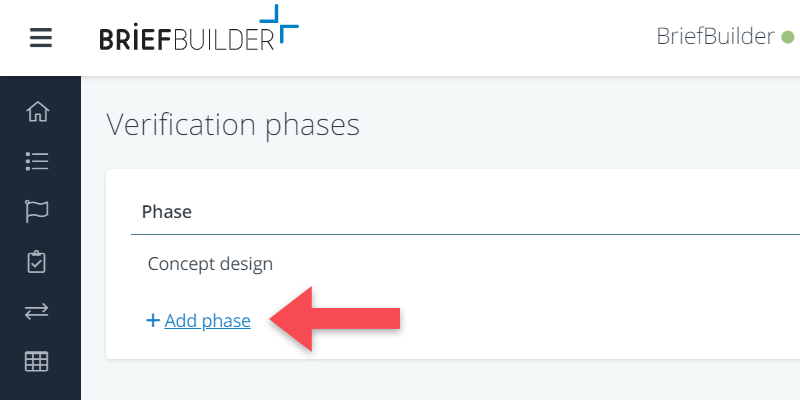
Once you have defined the relevant phases, these will show up in the verification table in the column Phases.
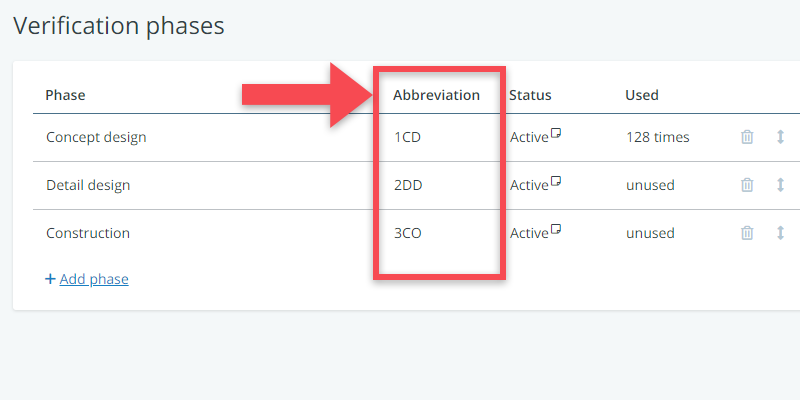
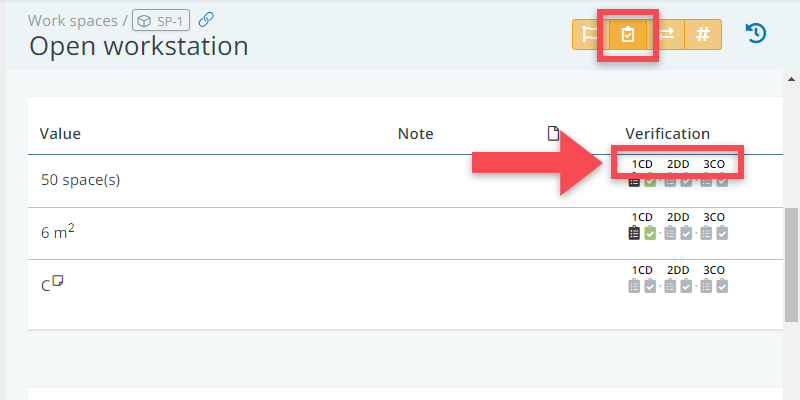

(2) Verification methods
You may also want to define how a verification should be performed. What should be done to demonstrate compliance?
Examples of verification methods are document review, calculation, inspection, simulation, performance test, and functional test.
To define verification methods, you have to head over to: Settings > Verification > Standard Properties.
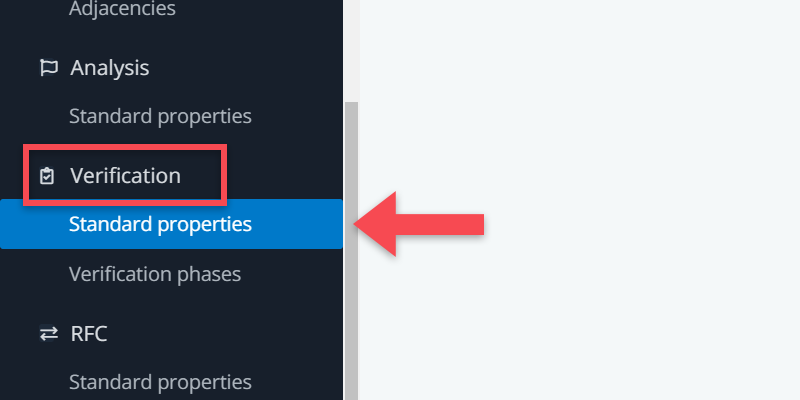
And then select Verification plan.
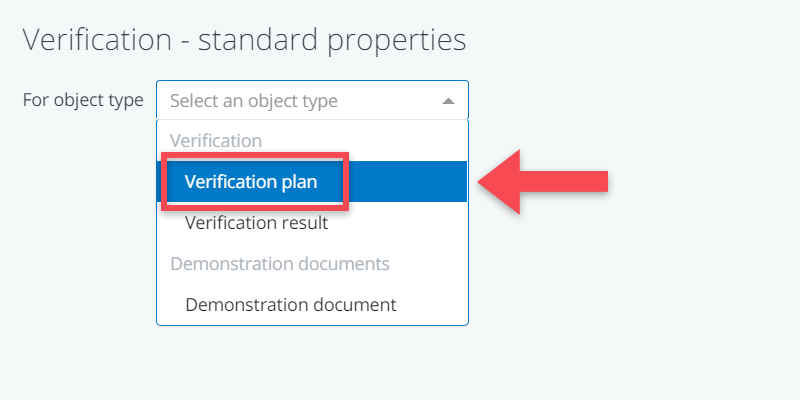
There, you can create a property (such as Method) by clicking on + Add standard property and setting the input type to Picklist.
Click on the Picklist value field to be able to add a number of predefined methods. You are also able to add a description for every individual picklist option (the methods, in this case).

Click on the Picklist value Field to be able to add or edit the available methods.
Once you have defined the relevant methods, these will show up in the verification table as a drop-down menu in the column Method.
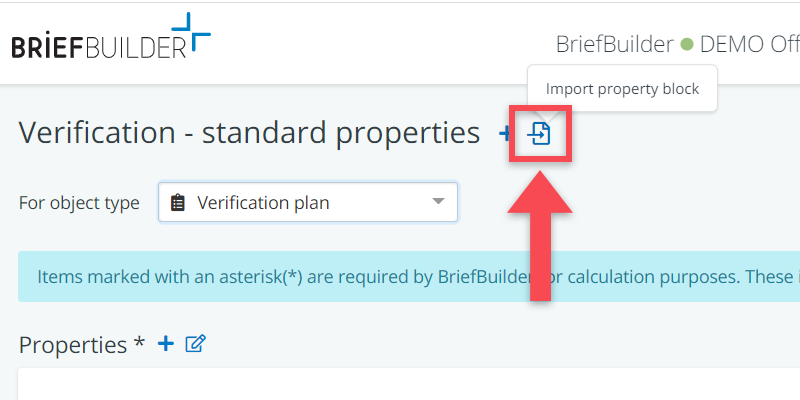
(3) Verification executors
For reasons of accountability, it is important that there is a person or company that is responsible for a verification. In BriefBuilder, this responsibility can be assigned on different levels. You can link verifications to:
- Users (specific persons who are registered as BriefBuilder users for your project)
- Organisations (e.g., Architecture firm A or Contractor B).
- Roles (e.g., architect, engineer, indoor climate consultant)
When assigning verifications to users you have to make sure that their accounts are linked to the right verification roles and permissions.
When specific users and organisations aren’t known yet, you can choose to assign verifications to functional roles (e.g., architect, supplier, contractor etc.). These roles can be added via the roles menu:
Go to Settings > Project model > Roles.
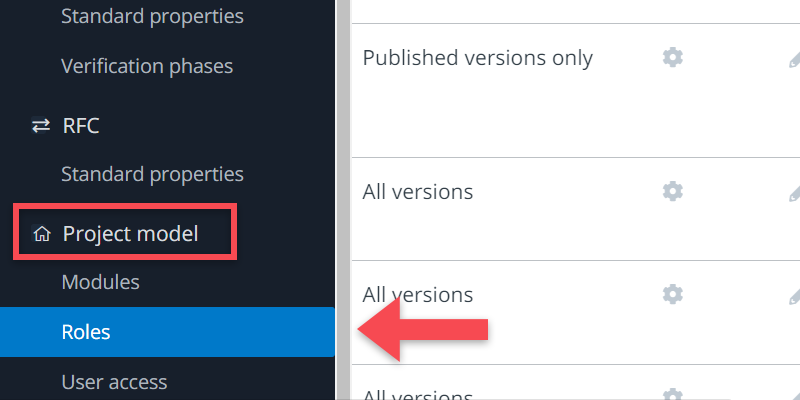
Click on Add role, and e.g. create a role called Architect

For that role, go to the column Verification Result and activate the Assigned edit icon (). This allows users who have that role to add verification results for the verifications that have specifically been assigned to that role.

(4) Verification result categories
The different outcome possibilities for verification results can also be part of setting up your verification plan. By default, BriefBuilder provides the following outcome options for verifications:
- Compliant
- Partially compliant
- Non-compliant
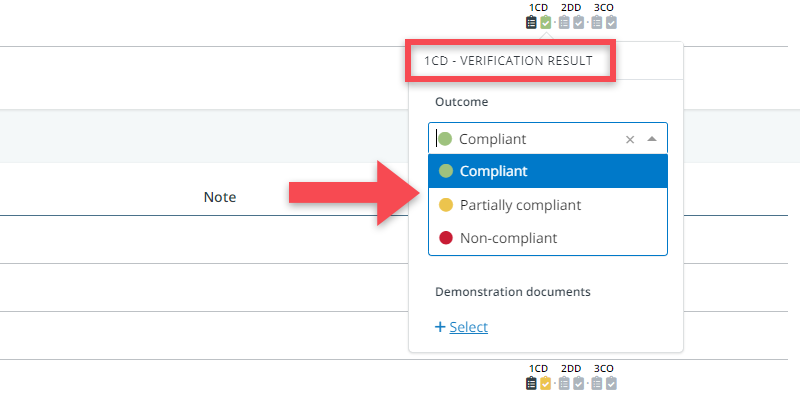
You can easily edit these categories via the Settings menu. You may, for example, want to add an outcome option called Not yet verifiable.
To define and edit verification result properties, you have to go back to Settings again and click on Standard properties below Verifications.

Then select Verification result (not plan!).
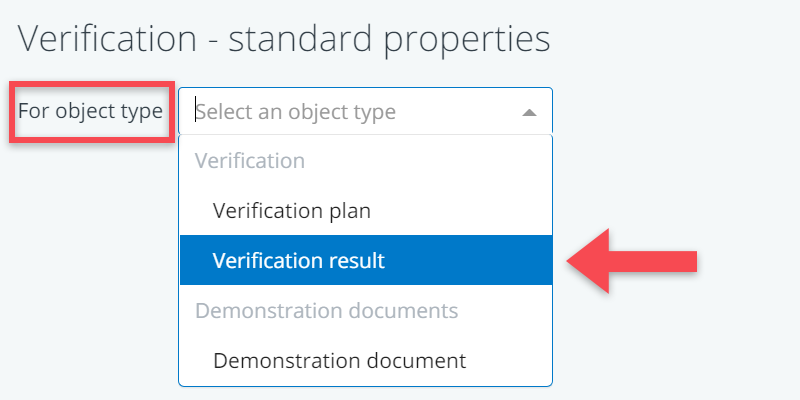
If you want to change the outcome categories, click on the Picklist values field for the property Outcome.
If you want to add a new property, click on Add standard property. Set the input type to Picklist if you want to have a drop-down menu.
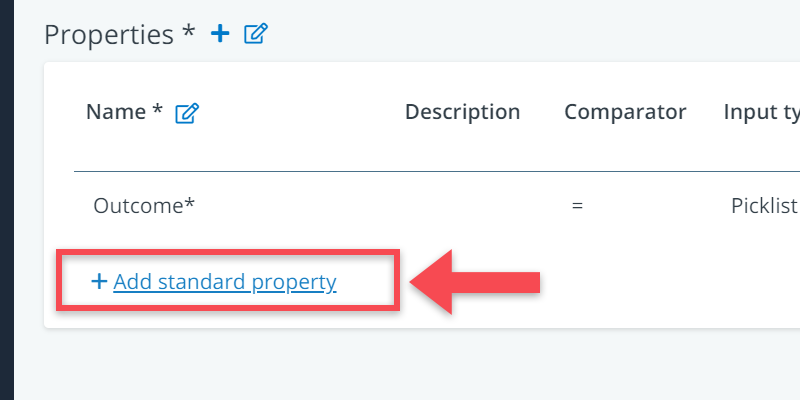
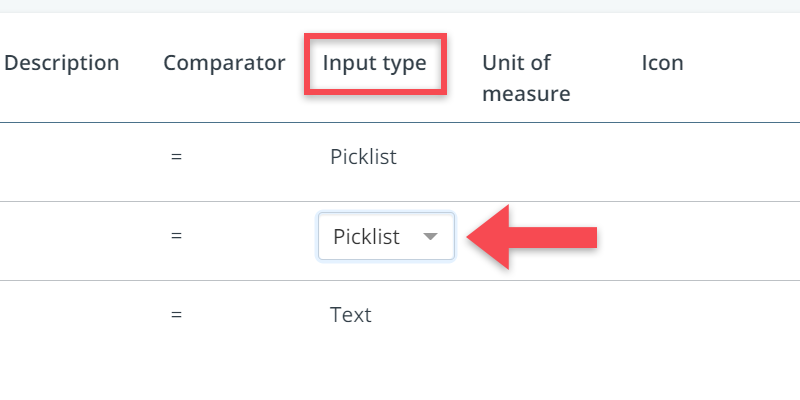
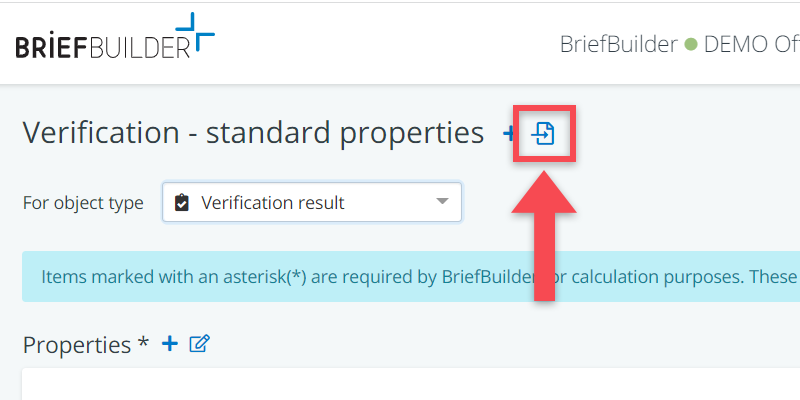
Making the actual plan
Once you have defined the overall set-up, you can start creating the actual verification plan.
To make the verification plan, go to the Verification table under Verifications in the main menu.
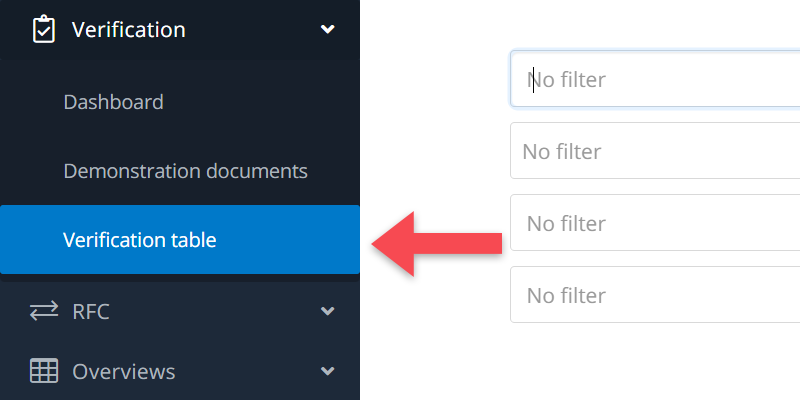
In this table, you are able to find all the requirements in the entire model. For each individual requirement you can define whether, when, how and by whom it should be verified.
Typically, you do this in batches: you select groups of requirements that have to be verified in the same way and in the same phase. For example: you select all requirements concerning floor sizes and then define that all these should be verified during the concept design phase, by means of a calculation, with Architect Firm X as responsible party.
You can make these selections by means of the table’s selections and filters.
Table definitions and selections
Before you get to see the actual table, there is a screen in which you can either select predefined table definitions (if available) or create your own selection of verification data.
To see all selection possibilities, you have to click on Definition.

Under Definition, you’ll see selections for both verification data (e.g. verification phase) and the requirements (e.g. a particular tree).
Selections for verifications
- Phase: relevant when wanting to define verifications for a particular phase.
- Verify?: relevant for selecting requirements that should be verified (= Verify) or not (= Don’t verify), or requirements for which this hasn’t been determined yet (= Empty)
- Responsible: relevant for finding verifications that haven’t been assigned yet.
- Outcome: relevant for verifications with a particular outcome (or lack thereof).
- Assessment: relevant for when verification outcomes have been assessed.
- Demonstration documents: relevant when interested in the verifications that have been tied to a specific demonstration document.
Selections for requirements
- Tree: the tree or tree part that your set of requirements is part of (e.g., Spaces & Locations).
- Object type: relevant when interested in a particular object type (e.g., only spaces).
- Labels: relevant when looking for requirements that related to objects with a particular label (e.g., “new” or “existing”).
- Requirement subject: relevant when looking for a particular type of requirement.
Selecting requirements
When setting up the verification plan, the main question is which verifications should take place in which phase. This depends on the available information in a phase (e.g. the level of detail, LoD, of the the design models) and involved disciplines per phase.
For example: the spatial requirements for a building (i.e. floor areas, room quantities, adjacencies, zoning requirements) can usually already be verified by the architect during concept design, while requirements concerning indoor climate can probably not be tested by the team’s climate engineer before detail design.
So, when setting up your verification plan, you will typically start with selecting a phase and a particular set of requirements by selecting a tree (or tree part) and a requirement subject.
Once you have made you selections, click on Show, and you will get to see the set of requirements for which you want to define your verification plan details.
In the table itself, you can narrow your selection further down by using the column filters (the little filter icon above each column).
Especially the filter in the column Requirement type will be relevant as it allows you to make a very specific selection of requirements.
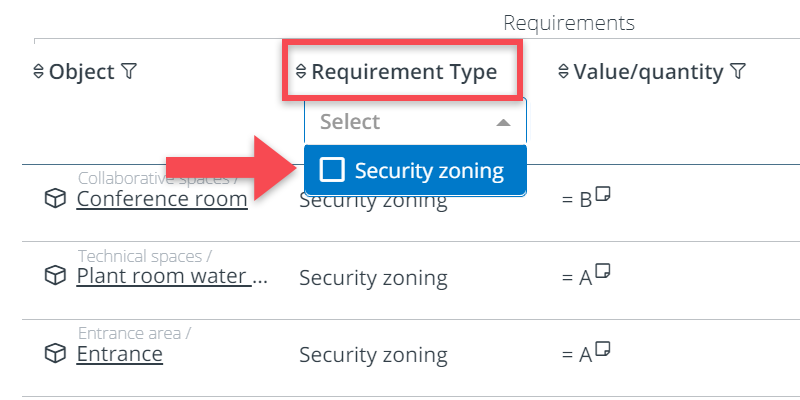
Adding verification plan details
Once you have selected the set of requirements that you had in mind, you can start filling in the verification plan details for these requirements.
You can define who is Responsible, buy selecting a specific role, person or company (depending on how you want to organise this).
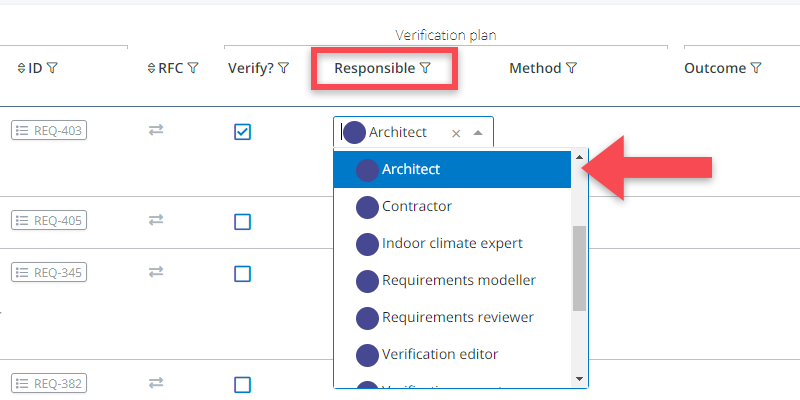
And you can add other kinds of details (such as verification method), depending on the verification plan properties that you have defined in the settings menu.
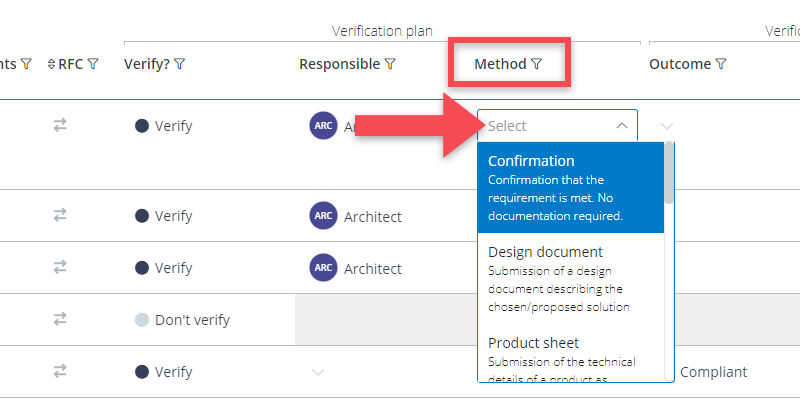
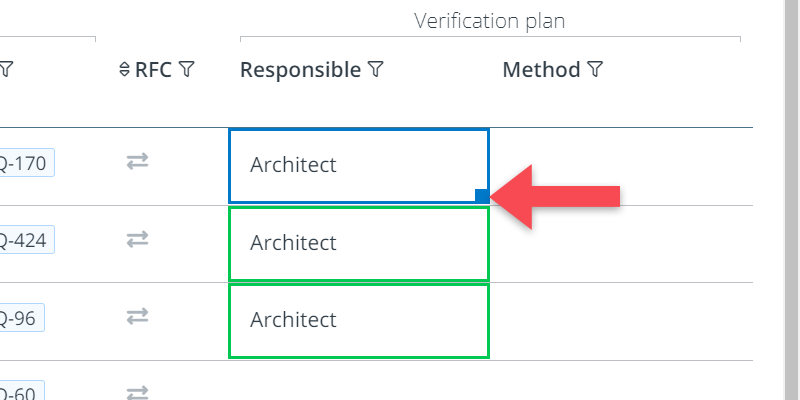
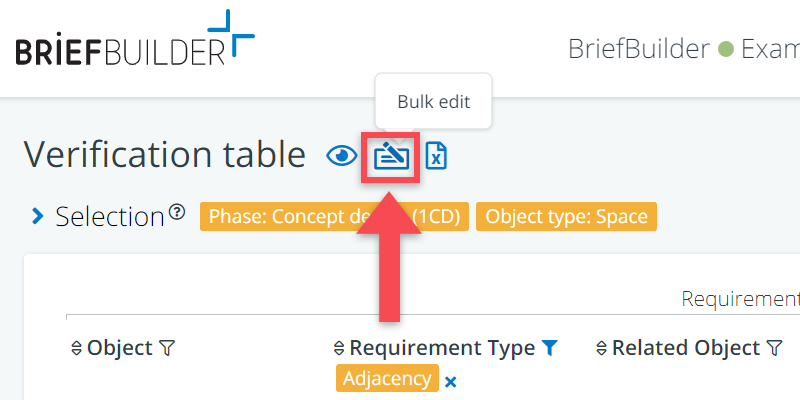
Defining which requirements should NOT be verified
While making your verification plan, you may also want to indicate that particular requirements should not be verified in particular phase.
A simple example: when designing a tunnel, it will not be relevant to already verify the quality of road markings when you are still working on the tunnel’s overall design. In such a case, you will want to exclude these matters from your verification plan for that phase.
This can be done in the following way:
(1) On the selections page, select the relevant phase (e.g. Basic design)
(2) On the same page, select the requirements that you do not want to verify in that phase (e.g. selecting Road markings from the Systems & Elements tree via the Select tree part button)

(3) Click on show, and, if relevant, narrow your selection by using the filters in the table.
(4) For your selection of requirements, select Don’t verify in the Verify column.

Please note: it will be too big a job to do this manually when it concerns lots of requirements. In that case, it is best to use the bulk edit feature. See below for how to do this.
(1) Make sure that your selection is right (= requirements that you don’t want to verify in that phase)
(2) Go to the bulk edit button on the top of the table.

(3) In the bulk edit menu, go to Verify?, select Change values, and then select Don’t verify.

(4) Click on Next and review what you are going to do. When happy with that, click on Apply bulk edit.

Moving or cloning verifications to another phase
When working on your verification plan, it might occur that you suddenly realize that it would be better to verify a particular set of requirements in another phase than where they currently are.
Or, when already doing verifications, you might realize that you want to re-verify a particular set of requirements (e.g., those that had ‘non-compliant’ as a result) in the next phase.
In both cases, you want to transfer verification data from one phase to another. In BriefBuilder, this can be done with the clone/move verifications button () in the verification table.

To move or clone verification data to another phase, you have to do the following:
1. In the selection window, select the phase for which you want to clone/move verification data.

2. In the same window, use the other selections to get the set of requirements for which you want to move/clone verification data. When done, click on Show.
3. In the table itself, you may want to use the filter options to further narrow your selection.

4. When you have the right set of data on your screen, click on the clone/move verifications button ().

5. In the pop-up, choose whether you want to clone (= duplicate) the verification data in another phase, or really want to move the data to another phase.
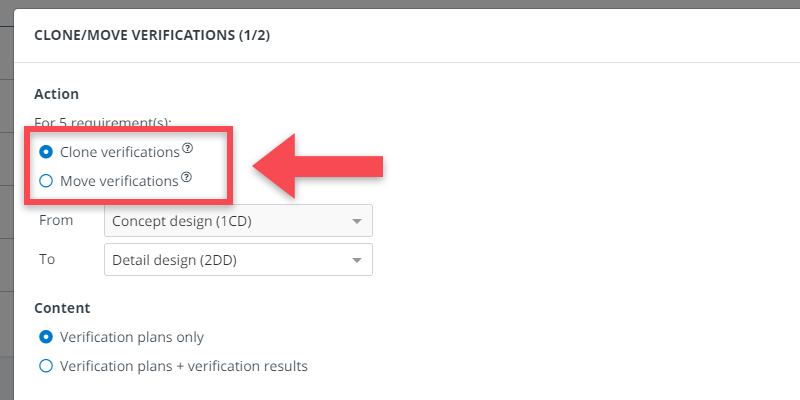
6. Select the ‘target phase’ to which the data should be moved/cloned to. (Note: the ‘source phase’ is a given as you have selected that in step 1).
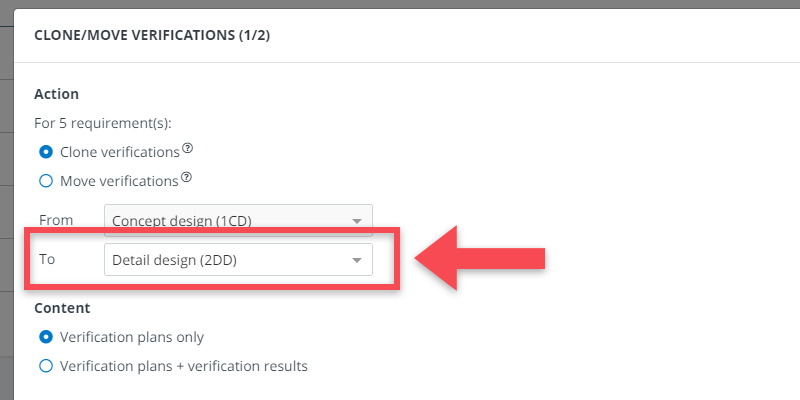
7. Choose whether you want to include the verification results or whether you only want to move/clone the verification plans.
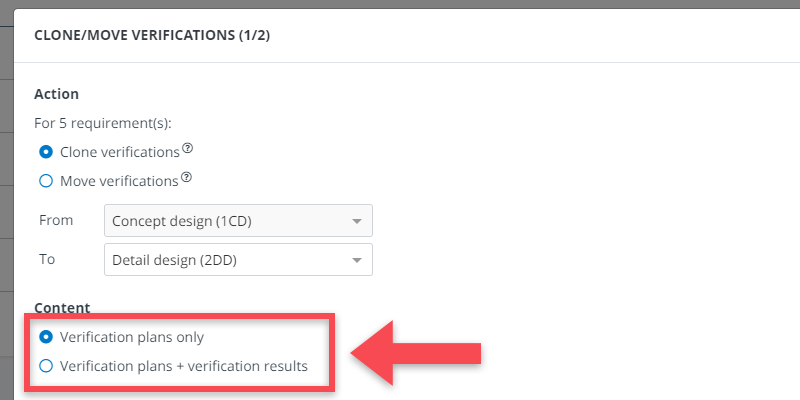
8. Click on Next and check the impact summary to ascertain yourself that you are doing what you intend to do.

9. Last: click on the clone/move button in the lower right corner of the pop-up.
Please note: once you have completed the operation, you are still in the table selection that you started with. To see the moved/cloned verifications, you have to go back to the selection screen and select the appropriate phase.
Cloning a verification phase
It’s also a possibility that you might like to clone an entire verification phase as a new phase. To do so, you have to navigate to the verification phases in the settings menu (Menu > Settings > Verification > Verification phases).
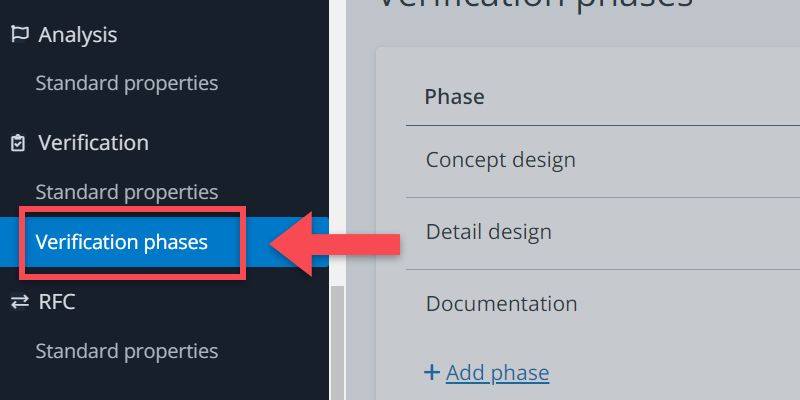
There, you will see the verification phases that you have defined.
By clicking on the clone button (), you will get a copy of that phase plus the related verification data.
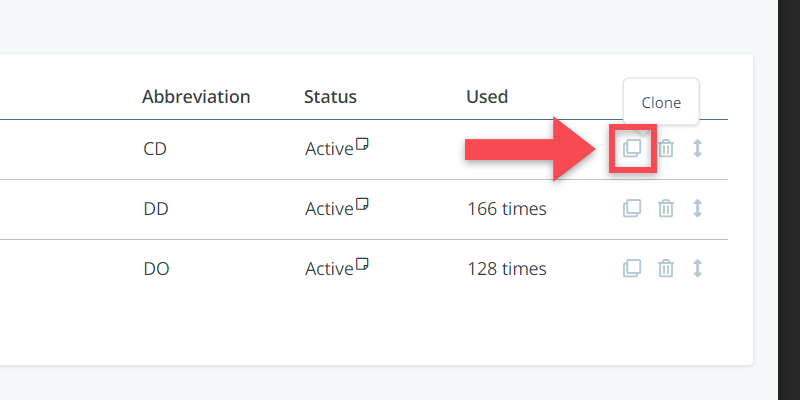
When making the clone, you get the option to include or exclude the verification results. The default settings is that verification results are not included.
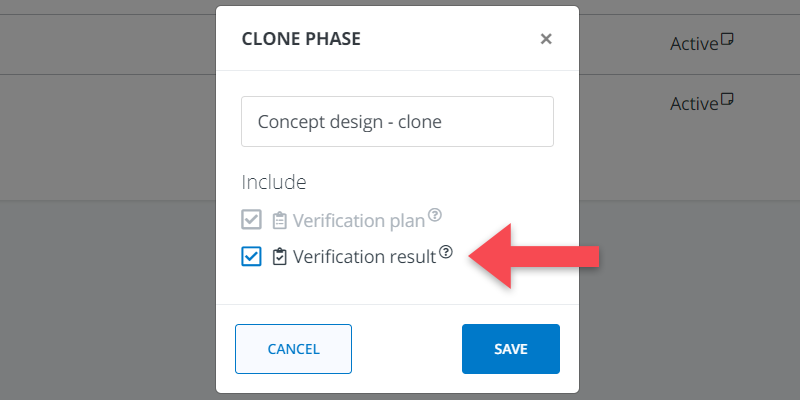
Doing the actual verifications
Once your verification plan is set up, it is time to do the actual verification and fill in the results. How to do so is explained in a separate article.
